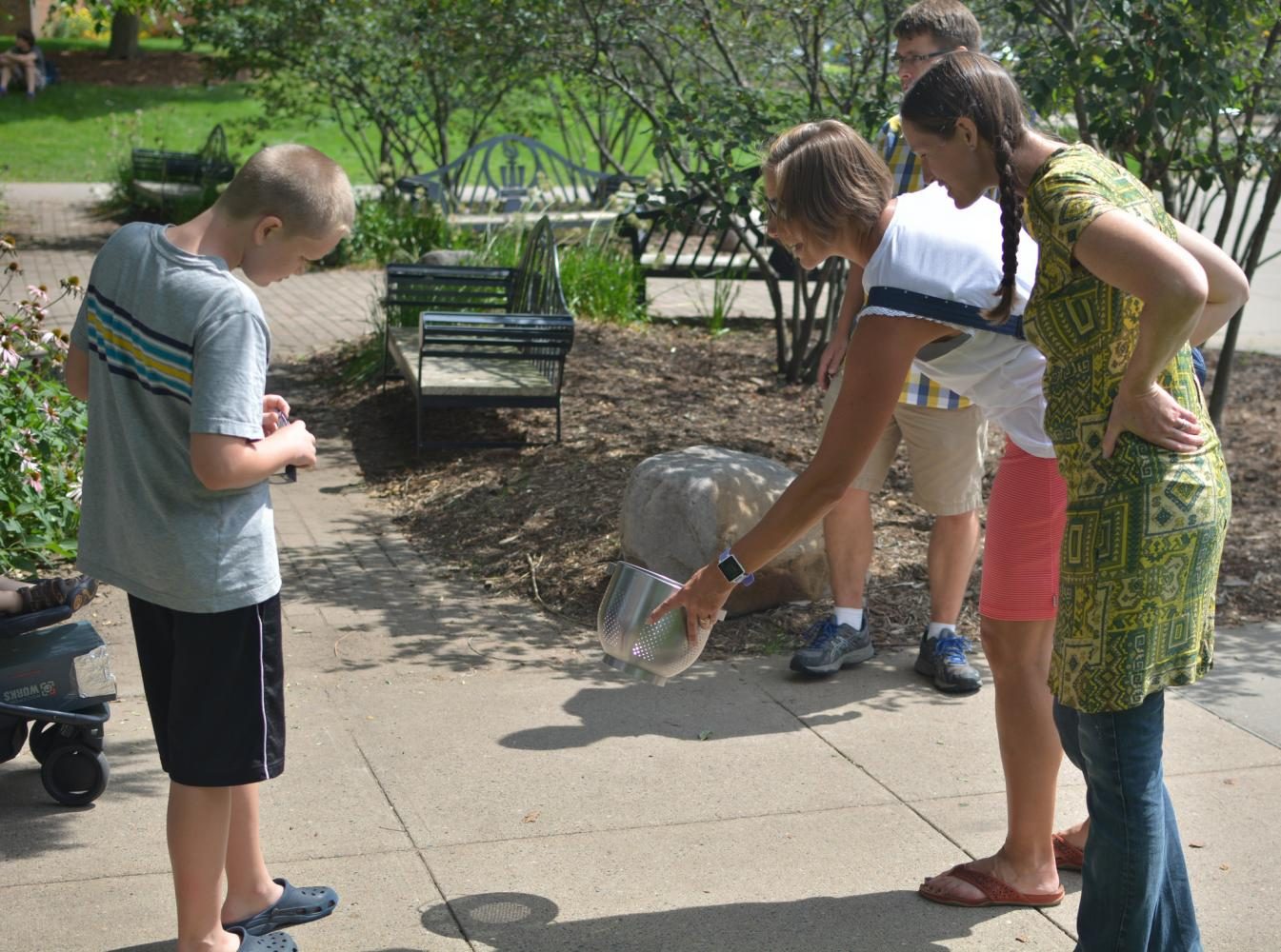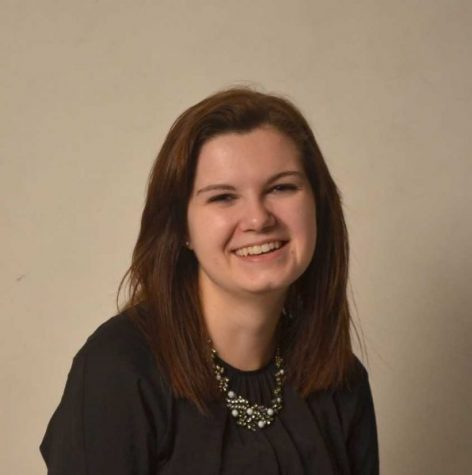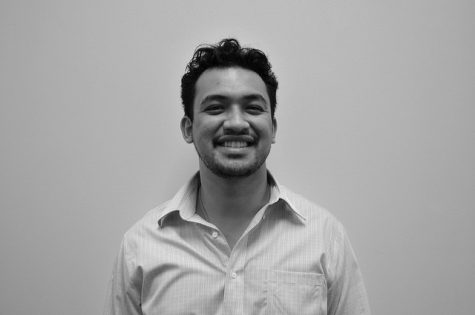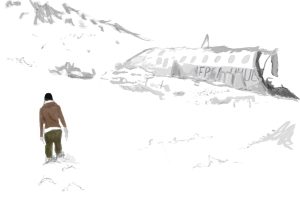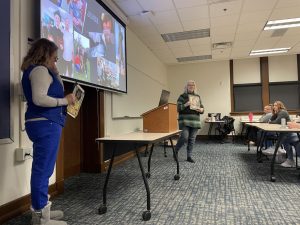Community gathers on campus for eclipse
Using a colander, Winona citizens view the effects of the solar eclipse, which make the sunlight shining through the holes look like small cresents. Sunlight through binoculars shined onto a large piece of paper and through the leaves of the trees also casted cresents around campus during the solar eclipse.
August 30, 2017
Geoscience students and faculty organize solar eclipse viewing event
Crowds of students, faculty and community members flocked to the Winona State University campus as a solar eclipse made an appearance over the United States.
Professor Jennifer Anderson orchestrated an event sponsored by the geoscience department where students and community members could congregate on campus to view the solar eclipse together on Monday, Aug. 21.
“I like public events and I was thinking we should do something on campus,” Anderson said.
The odds of seeing a total solar eclipse are rare since they only happen over a small portion of the Earth’s surface. There was only a small area from Oregon to South Carolina where people could see the disc of the Moon cover the entire disc of the Sun.
Students and community members of Winona, along with most of the United States, were able to view a partial eclipse this year.
Anderson ordered the eclipse glasses back in May and was slowly preparing throughout the summer before finally getting everything into motion two weeks before the eclipse.
“I was really happy how, on the first day, many faculty said they had let their students out at some point,” Anderson said.
Knowing there was a safe way to look at the Sun without incurring severe retinal damage, Anderson had a team of people willing to help out with telescopes, binocular projections and handing out glasses.
The team of volunteers included faculty from the Winona State math and statistics, geoscience and physics departments.
An astrophysics professor from Saint Mary’s University, a middle school geology teacher from Bluffview Montessori School and a high school geology teacher from Plainview Elgin-Millville were also in attendance.
“My husband, who is also a planetary geologist and an astrophysicist, took a day off of work so he was here to help,” Anderson said. “I had about 10 students who are a part of the Astronomy club helping out.”
All of the volunteers arrived at 10 a.m., in preparation of the 1:09 p.m. ideal eclipse viewing time, to make sure everything worked out well and everyone was safe.
The volunteers also had meter sticks that set a scale measuring the distance between the earth and the moon to teach people more about solar eclipses.
When the Moon passes directly between the Earth and the Sun, the Moon’s shadow falls on Earth.
“There are about two-to-three solar and lunar eclipses a year, but the total solar eclipses, like the one on Monday, only happens about [every] 18 months,” Anderson said.
The next solar eclipse will be April 8, 2024. It will start down in Texas, move through the United States and leave North America north of Maine.
The solar eclipse allowed scientists to view the cornea of the Sun, which was only seen in select cities in Oregon, Idaho, Wyoming,
Nebraska, Missouri, Illinois, Kentucky, Tennessee, Georgia and South Carolina.
“The main part of the sun where you are getting your photons and the light from was completely blocked, which means you then saw this big halo of flames which is the sun’s atmosphere called the cornea. The only time that is visible is during the solar eclipse,” Anderson said.
The solar eclipse brought the Winona State campus together by having everyone stand outside, talking about how Earth, the Moon and the
Sun are completely in line with each other.
“And to think that we as human beings figured out the orbits of the earth around the sun and the moon around the earth, and we know it so well that we can predict it within seconds when the shadow is going to fall on us and we did all that with math and science and our brains,” Anderson said.
Winona State seniors Sara Tryggestad and Lindsey Brezinski took time out of their day to help Anderson with the event.
“It is really cool that they are offering this. It offers students a chance to look at the sun in a safe and educational way,” Tryggestad said.
Brezkinski was able to draw on her previous academic experiences to help out with the event.
“I took the astronomy course here and that sparked my interest in watching the solar eclipse,” Brezinski said.
Not only college students and faculty participated in the viewing, but community members from Winona, Rochester and La Crosse also came to Winona State University’s campus.
“I was so overwhelmed with how many people we had on campus. That was the biggest event I have ever tried to have and it was way bigger than what I thought it was going to be,” Anderson said. “These types of things are best done in big groups so the vibe on campus was great. Everyone was so excited and that is what it is meant to be. It was wildly beyond my dreams.”
Not only college students and faculty participated in the viewing, but community members from Winona, Rochester and La Crosse also came to Winona State University’s campus.
“I was so overwhelmed with how many people we had on campus. That was the biggest event I have ever tried to have and it was way bigger than what I thought it was going to be,” Anderson said. “These types of things are best done in big groups so the vibe on campus was great. Everyone was so excited and that is what it is meant to be. It was wildly beyond my dreams.”





























